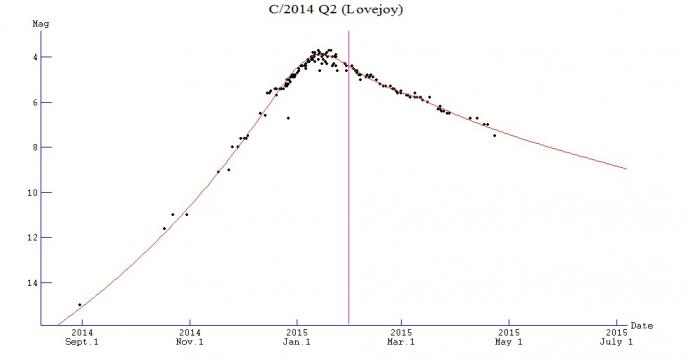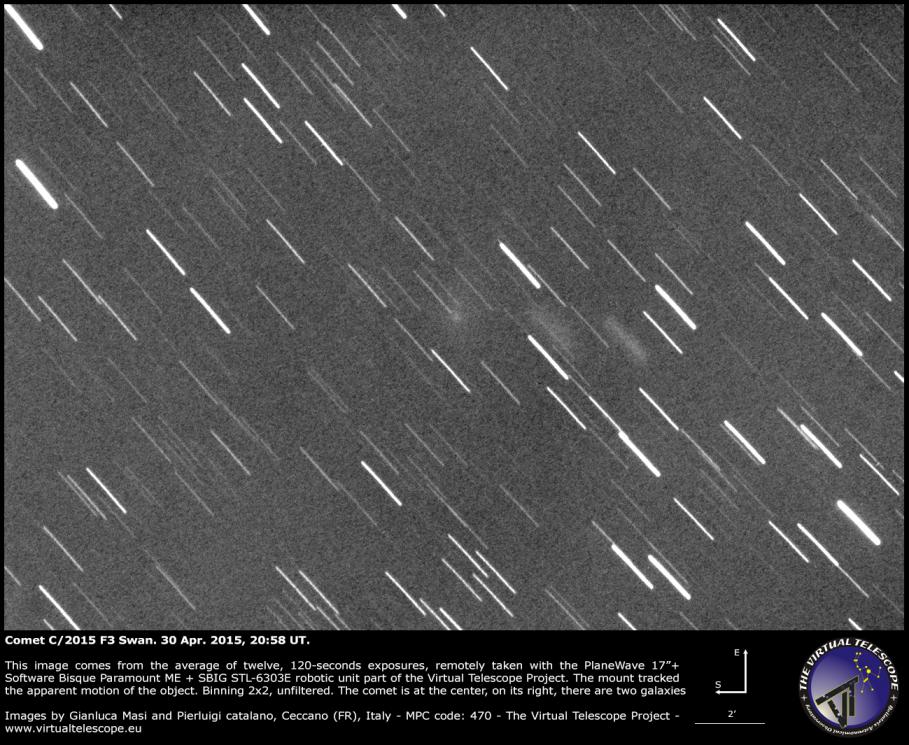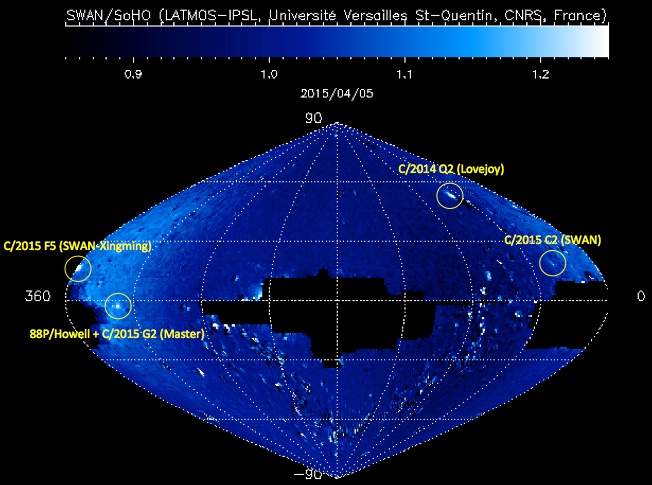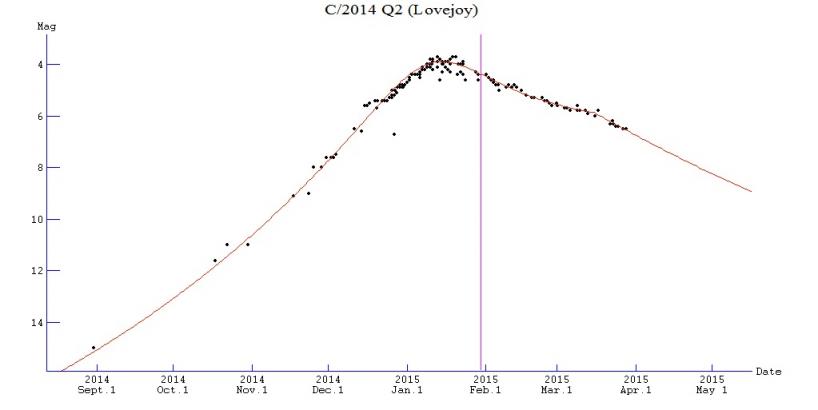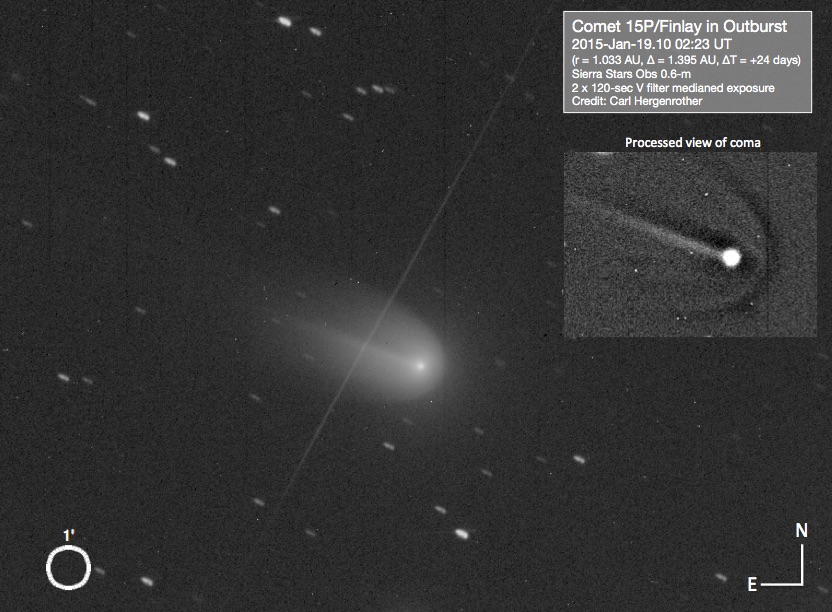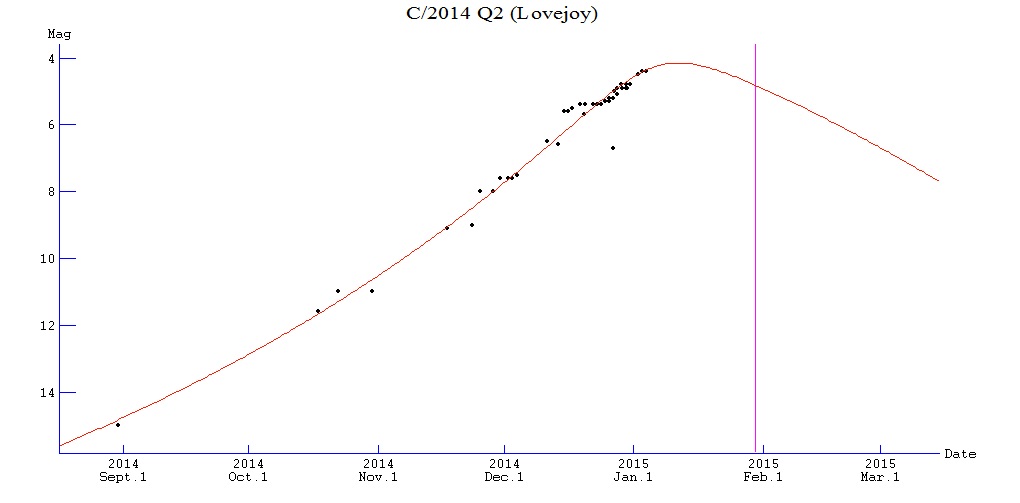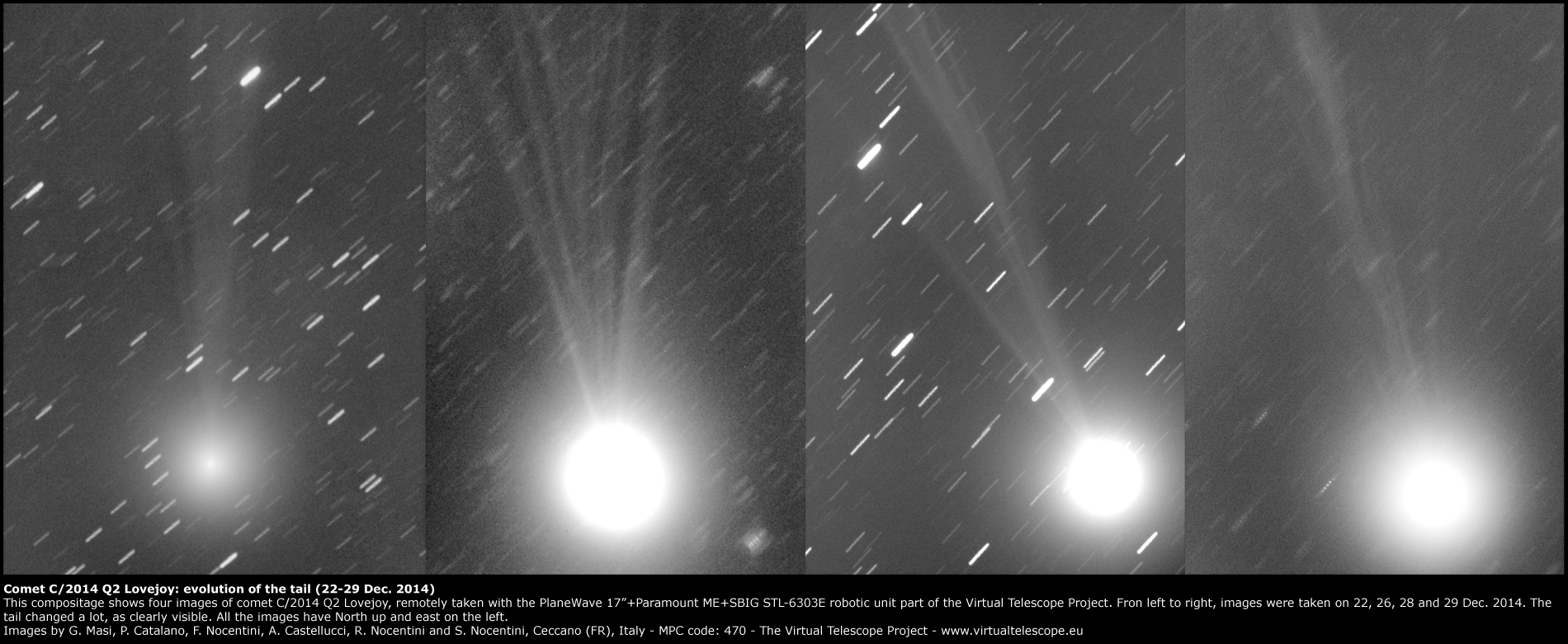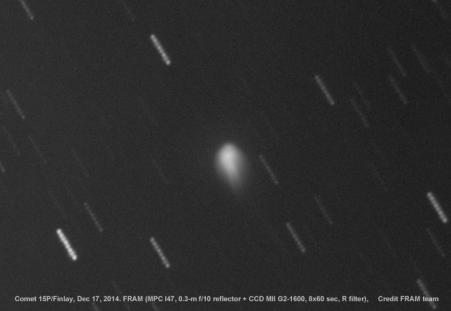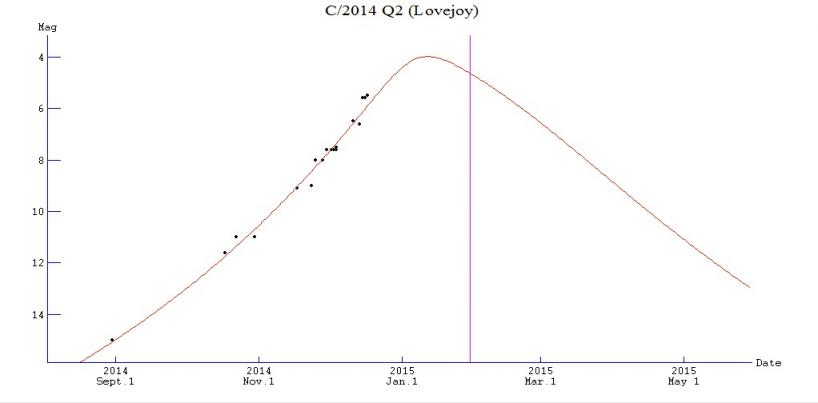ALPO COMET SECTION NEWS FOR JULY 2015
2015-July-06
July sees one of the brightest comets of the year reach perihelion. C/2014 Q1 (PANSTARRS) may be a nice binocular object for observers south of the Equator as it climbs into darker skies later this month. Northern observers are in a bit of a summer drought as no comets brighter than 9th magnitude will be visible.
Evening Comets
C/2014 Q2 (Lovejoy) [Perihelion on 2015-Jan-30 at 1.29 AU from the Sun]
Lovejoy is located in the far northern sky as it slowly moves south through Ursa Minor (July 1-16) and Draco (16-31). Now 5 months past perihelion, the comet is still around magnitude 9.0-9.5. Its distance from the Sun (2.48 to 2.81 AU) and Earth (2.52 to 2.83 AU) continues to increase resulting in a slow fade to magnitude 9.7 to 10.2 by the end of July.
Recent ALPO images and observations of C/2014 Q2 (Lovejoy) can be found in the Comet Section Image Gallery and Magnitude Database. Finder charts can be found at the ALPO Comet Finder Chart page.
C/2015 G2 (MASTER) [Perihelion on 2015-May-23 at 0.78 AU from the Sun]
Comet MASTER peaked at magnitude 6.0 in mid-May. As of late June it had faded to 9.0 and will continue to fade in July. Unfortunately it is very close to the Sun at the start of the month (elongation 25°) and only gets closer as the month progresses. It will be lost in the glare of the Sun till September when it will be fainter than 11th-12th magnitude.
Recent ALPO images and observations of C/2015 G2 (MASTER) can be found in the Comet Section Image Gallery and Magnitude Database. Finder charts can be found at the ALPO Comet Finder Chart page.
Morning Comets
C/2014 Q1 (PANSTARRS) [Perihelion on 2015-Jul-06 at 0.31 AU from the Sun]
Comet PANSTARRS reaches perihelion today (July 6) at a distance of 0.31 AU from the Sun. Unfortunately it is also 1.25 AU from Earth and only 10° elongation from the Sun. As a result, very few observers have been able to observe Q1 over the past few weeks. What we do know is that is appears to be around 4th magnitude. Northern observers are out of luck this month. Southern hemisphere observers will be able to pick the comet up towards the end of the month as it moves away from the glare of the Sun. By then the comet will be rapidly fading to 6th-8th magnitude as it moves through Auriga (July 1), Gemini (1-8), Cancer (8-18), Leo (18-22), Sextans (22-31).
Recent ALPO images and observations of C/2014 Q1 (PANSTARRS) can be found in the Comet Section Image Galleryand Magnitude Database. Finder charts can be found at the ALPO Comet Finder Chart page.
C/2013 US10 (Catalina) [Perihelion on 2015-Nov-15 at 0.82 AU from the Sun]
C/2013 US10 is inbound towards a November perihelion. Currently around 10th magnitude, Comet Catalina is well place for southern observers. Northern hemisphere observers are having an increasingly more difficult time observing the comet as it heads south through Sculptor (July 1-5), Phoenix (5-23), Grus (23-24) and Tucana (24-31). Catalina starts the month at 2.38 AU from the Sun and 1.81 AU from Earth and ends the month at 1.97 AU and 1.16 AU from the Sun and Earth, respectively.
Recent ALPO images and observations of C/2013 US10 (Catalina) can be found in the Comet Section Image Galleryand Magnitude Database. Finder charts can be found at the ALPO Comet Finder Chart page.
New Discoveries
Pan-STARRS lead the way in June with 3 new discoveries.
C/2015 K5 (PANSTARRS) is a short-period comet with a period of 17 years. Perihelion occurred on June 6 at 2.99 AU. Discovered by Pan-STARRS on May 29, it was already as bright as it’ll get at 20th magnitude.
C/2015 LC2 (PANSTARRS) is another faint Pan-STARRS find. The survey picked it up at its brightest (~19th magnitude) on June 7. Perihelion was in April at a distance of 5.88 AU. C/2015 LC2 is a long-period comet.
C/2015 M1 (PANSTARRS) is yet another faint Pan-STARRS long-period comet. It peaks at 19th magnitude and is already past its May 16th perihelion at 2.10 AU from the Sun.
As always, the Comet Section is happy to receive all comet observations, whether images, drawings or magnitude estimates.
- Carl Hergenrother (Acting ALPO Comet Section Coordinator)

